As an Amazon Associate I earn from qualifying purchases.
Editorial Policy | Disclosure Policy
Math Puzzles to Ignite Creativity
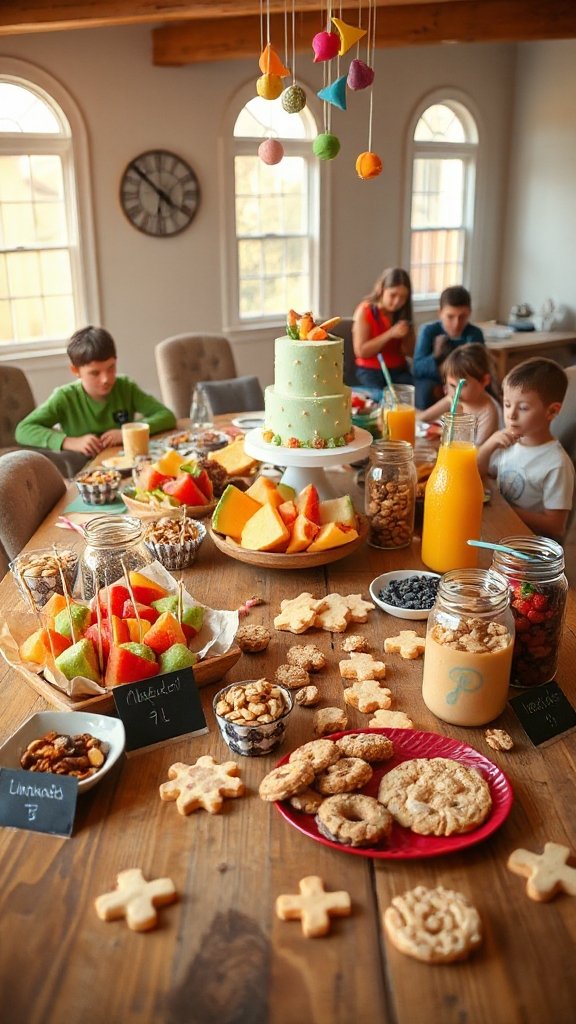
This dish is a fun and engaging recipe designed to blend the delightful flavors of puzzles and creativity into a delightful experience for young minds. Each “ingredient” represents a different component of a math puzzle, feeding their brains with an entertaining challenge that inspires critical thinking, problem-solving, and creativity while enjoying the process like a delicious meal!
| Ingredients | Quantity |
|---|---|
| Riddles | 5 pieces |
| Logic puzzles | 3 pieces |
| Number sequences | 4 examples |
| Shape challenges | 2 different types |
| Visual brain teasers | 3 images |
| Collaborative games | 2 group activities |
| Creative drawing tasks | 1 fun prompt |
Cooking Steps:
- Start by gathering all your ingredients (puzzles and challenges) and laying them out for easy access.
- Mix the riddles and logic puzzles together to create intriguing problem-solving challenges.
- Add the number sequences and shape challenges for a colorful and structured layer of excitement.
- Stir in some visual brain teasers to engage the children’s imaginations.
- Incorporate collaborative games, encouraging teamwork and brainstorming among the kids.
- Finish off the dish with a creative drawing task, allowing kids to express their solutions visually.
- Serve your math puzzle dish in small groups, encouraging discussions and creative thinking while enjoying the delicious journey of math!
Engaging Math Games for All Ages
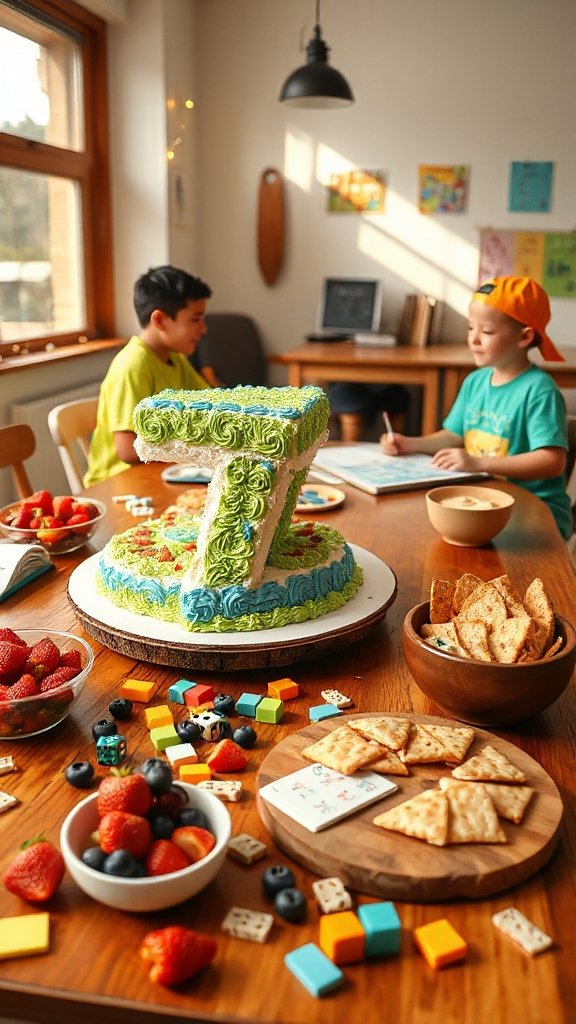
This dish is an exciting fusion of math games designed to challenge and entertain kids of all ages while sharpening their math skills. Each game serves as a fun ingredient that combines learning with play, ensuring that everyone, from young learners to older students, can enjoy a delicious helping of math-filled fun!
| Ingredients | Quantity |
|---|---|
| Math bingo cards | 5 sets |
| Number guessing game | 1 game |
| Dice rolling challenges | 3 types |
| Math relay races | 2 variations |
| Card games (math-themed) | 4 types |
| Puzzle races | 1 engaging challenge |
| Board games (strategy) | 2 options |
Cooking Steps:
- Gather all your math game ingredients and organize them for easy access.
- Start by setting up the math bingo cards and number guessing game to warm up the players.
- Introduce dice rolling challenges to create excitement and encourage quick thinking.
- Add some physical activity with math relay races to get everyone moving while learning.
- Incorporate fun card games that involve math concepts to enhance strategic thinking.
- Conclude with a puzzle race, challenging everyone to complete a math puzzle as quickly as possible.
- Serve each game in rounds, allowing kids to rotate and enjoy different games together, fostering engagement and teamwork!
Fun With Fractions: Creative Activities
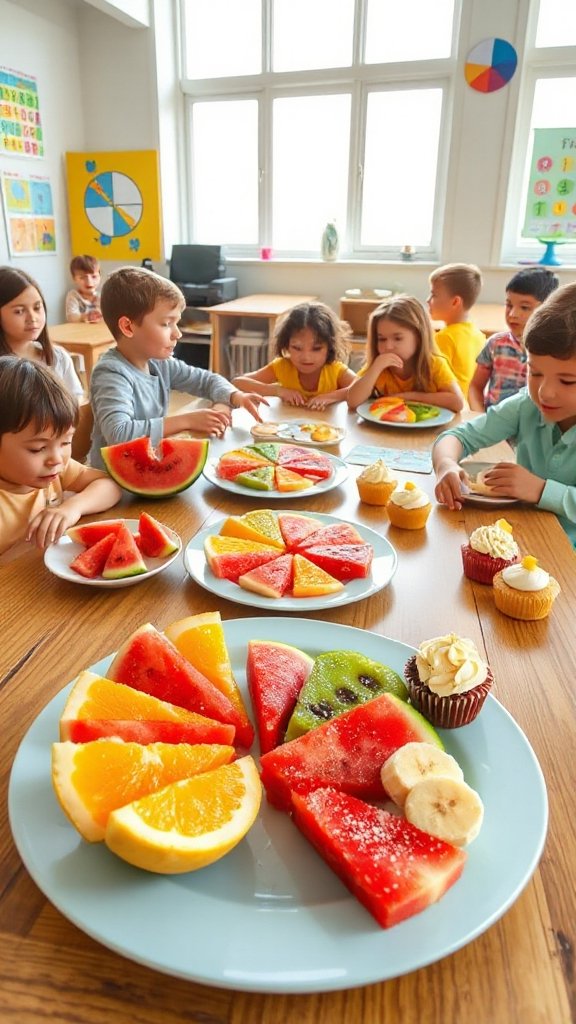
This dish introduces kids to the delectable world of fractions through creative and interactive activities. Fraction Fizzles is a blend of hands-on projects and fun exercises aimed at helping young learners grasp the concept of fractions in a fun and engaging way. Each activity takes the complexity of fractions and transforms it into a tasty experience that kids can chew on.
| Ingredients | Quantity |
|---|---|
| Fraction circles | 10 sets |
| Paper plates | 5 large |
| Scissors | 1 pair |
| Markers | 4 assorted colors |
| Baking ingredients (for a baking activity) | 1 simple recipe |
| Measuring cups | 2 sizes |
| Fraction flashcards | 10 cards |
| DIY fraction games | 3 types |
Cooking Steps:
- Prepare the fraction circles by cutting paper plates into different fractional parts, ensuring a variety of fractions are represented.
- Use markers to label the fraction parts for easy identification during activities.
- Set up a baking activity where measuring cups are used to reinforce fraction concepts (e.g., half a cup of sugar).
- Introduce fraction flashcards for a fun quiz or matching game to boost recognition of different fractions.
- Create fraction games, where kids construct and solve challenges using their DIY fraction materials.
- Engage students in discussions about fractions as they complete each activity, reinforcing their understanding in a collaborative environment.
Hands-On Geometry Projects
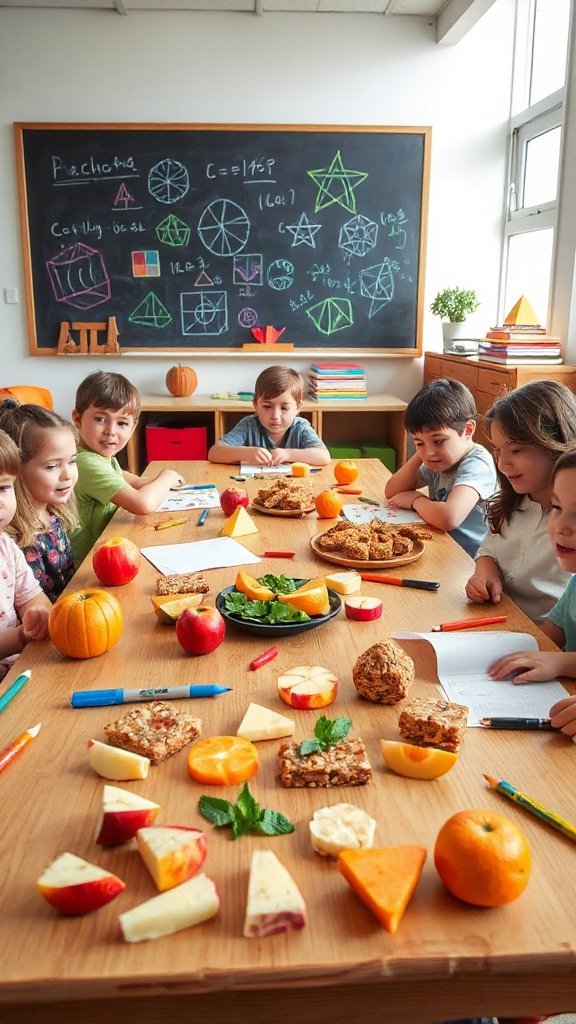
Hands-On Geometry Projects: Constructing Geometric Shapes
This dish is designed to immerse kids in the fascinating world of geometry through hands-on projects that promote creativity and spatial awareness. By forming various geometric shapes using everyday materials, children will grasp geometric concepts in an engaging and memorable way. Each project not only solidifies their understanding but also inspires a love for exploration in geometry.
| Ingredients | Quantity |
|---|---|
| Colored straws | 50 pieces |
| Pipe cleaners | 20 pieces |
| Construction paper | 5 sheets |
| Scissors | 1 pair |
| Ruler | 1 piece |
| Markers | 4 assorted colors |
| Geometric shape templates | 5 sheets |
| Adhesive tape | 1 roll |
Cooking Steps:
- Use the colored straws to create various geometric figures such as triangles, squares, and hexagons by cutting them to the appropriate lengths.
- Attach the shapes at the vertices using pipe cleaners for added stability.
- Utilize construction paper to create geometric templates that can be traced and cut out for a multi-dimensional aspect.
- Measure and label the sides of the shapes with markers to reinforce the concepts of area and perimeter.
- Encourage kids to present their shapes to the class, discussing the properties of the shapes they’ve created.
Discovering Patterns Through Art
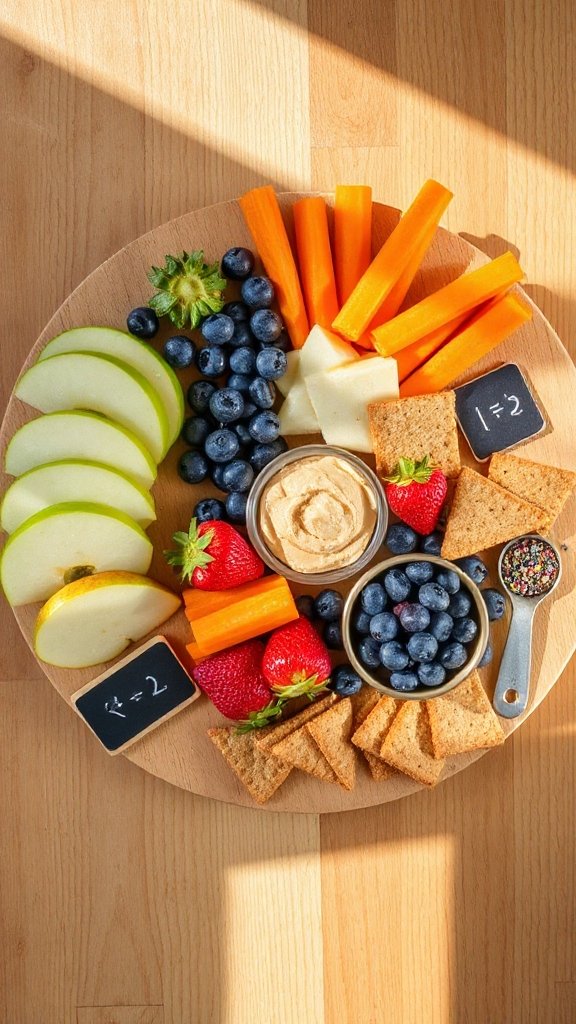
Discovering Patterns Through Art: A Creative Exploration of Patterns
This dish invites kids to explore the fascinating world of patterns through artistic expression. By engaging in activities that combine art and math, children will discover how patterns exist all around them, reinforcing concepts in symmetry, repetition, and design. Through the creation of their own patterned artwork, kids will develop a deeper appreciation for the beauty and mathematics of patterns.
| Ingredients | Quantity |
|---|---|
| Colored paper | 10 sheets |
| Watercolors or colored markers | 1 set |
| Ruler | 1 piece |
| Graph paper | 2 sheets |
| Scissors | 1 pair |
| Adhesive glue | 1 bottle |
| Stencils (various shapes) | 5 pieces |
| Decorative stickers | 1 pack |
Cooking Steps:
- Begin by using graph paper to create a grid and encourage kids to explore basic shapes and patterns.
- Use stencils to trace geometric patterns onto colored paper, experimenting with different colors and shapes.
- Paint or color in the shapes with watercolors or markers, giving life to the designs.
- Cut out the patterned shapes and arrange them creatively on another sheet of colored paper, forming a unique collage.
- Discuss the symmetrical and asymmetrical aspects of their artwork, emphasizing how patterns are formed and recognized.
Interactive Math Apps and Websites
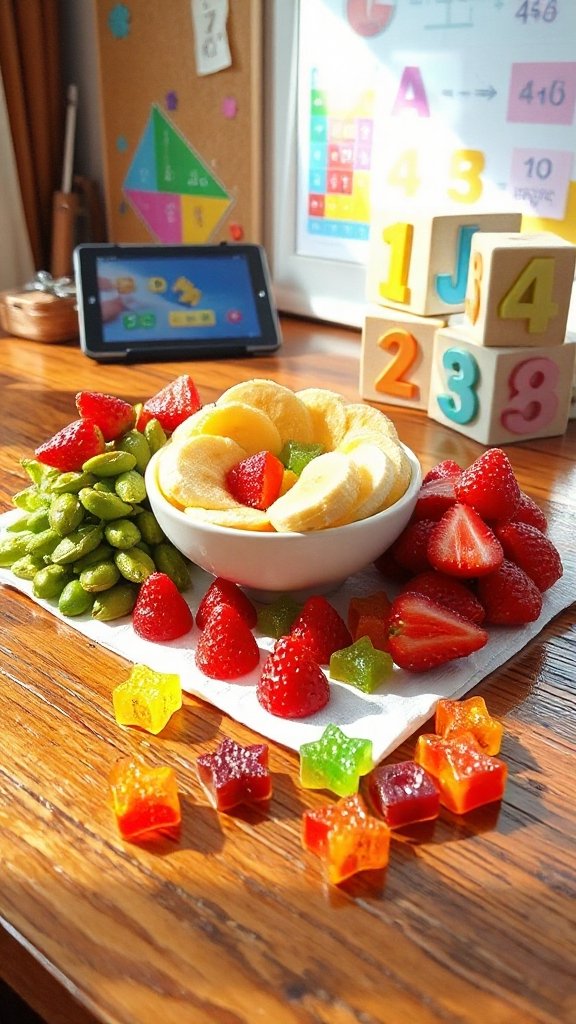
Interactive Math Apps and Websites: A Digital Feast for Mind and Math Skills
This dish combines the excitement of technology with the joy of learning math. Interactive math apps and websites serve as a digital playground for kids, fostering their understanding of mathematical concepts through engaging games and activities. By using these resources, children can practice their math skills in a fun and interactive way, making learning both effective and enjoyable.
| Ingredients | Quantity |
|---|---|
| Tablets or computers | 1 or more |
| Wi-Fi connection | 1 |
| Math apps (downloaded) | 3-5 apps |
| Educational websites | 3 websites |
| Game time schedule | 30-60 minutes |
| Creative rewards (stickers, etc.) | Optional |
Cooking Steps:
- Research and select a variety of interactive math apps and websites that cater to different age groups and math topics.
- Download the chosen apps on your tablet or computer and bookmark the selected websites.
- Set a fun game time schedule where kids can explore each app and website, ensuring engagement and focus.
- Encourage kids to complete specific challenges within the apps or online tools and track their progress.
- Celebrate their accomplishments by rewarding their achievements with stickers or other creative incentives.
Real-Life Math Challenges
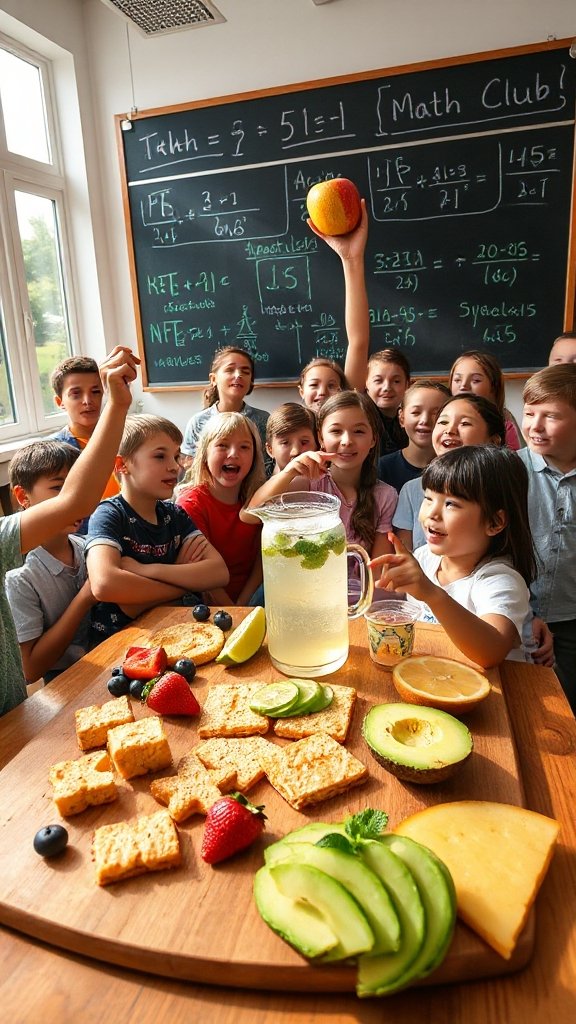
Real-Life Math Challenges: A Tasty Dish of Practical Learning
This dish offers a hands-on approach to math by using everyday situations to challenge and develop children’s problem-solving skills. Real-life math challenges turn mundane tasks into exciting opportunities to apply mathematical concepts. By integrating math into real-world scenarios, kids not only build their skills but also see the relevance of math in daily life.
| Ingredients | Quantity |
|---|---|
| Everyday items (groceries, toys, etc.) | 5-10 items |
| Real-life scenarios (shopping, cooking, etc.) | 2-3 scenarios |
| Paper and pencils | 1 set |
| Calculators (optional) | 1-2 |
| Creative rewards (extra playtime, etc.) | Optional |
Cooking Steps:
- Gather everyday items and think of real-life scenarios where math can be applied, like shopping for groceries or measuring ingredients for a recipe.
- Create math problems related to each scenario, such as calculating total costs, dividing amounts, or measuring quantities.
- Give the kids a set amount of time to solve the challenges using paper and pencils or calculators if needed.
- Review their answers together and discuss any mistakes to reinforce learning.
- Celebrate their efforts and successes with creative rewards, such as extra playtime or a special treat.
Riddles and Brain Teasers
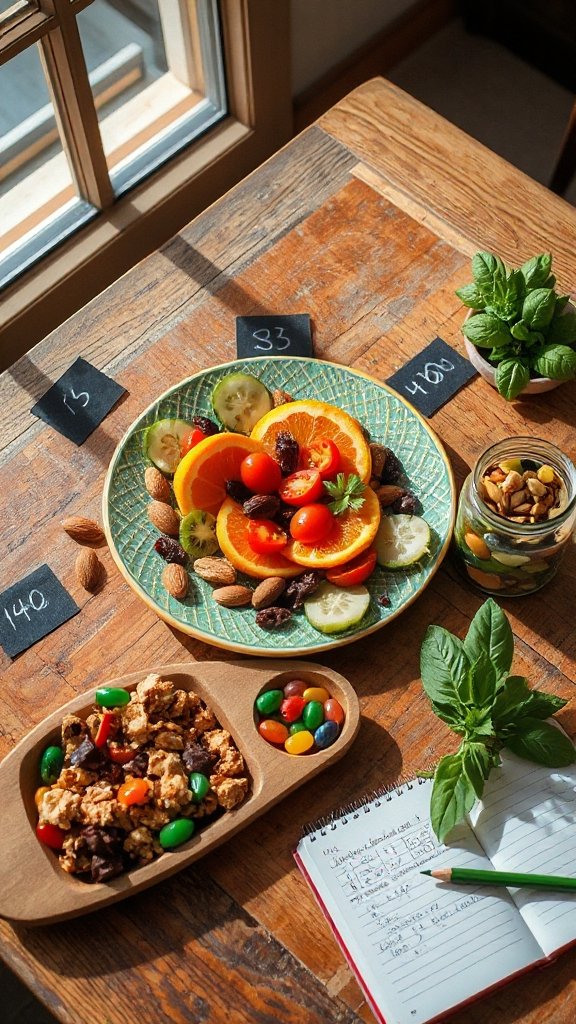
Riddles and Brain Teasers: A Fun Dish of Clever Thinking
This dish invites kids to engage their minds with deliciously tricky riddles and brain teasers that boost their problem-solving abilities while having fun. By incorporating math-themed riddles into their activities, kids can nurture their logical reasoning skills and enhance their understanding of mathematical concepts in a playful way.
| Ingredients | Quantity |
|---|---|
| Collection of math-themed riddles | 10-15 riddles |
| Whiteboard or flip chart | 1 |
| Markers or chalk | 1 set |
| Timer | 1 |
| Small prizes (stickers, etc.) | Optional |
Cooking Steps:
- Gather a collection of math-themed riddles suitable for the age group of the kids.
- Write each riddle on the whiteboard or flip chart, ensuring they are clear and engaging.
- Set a timer for each riddle to create a sense of challenge and excitement.
- Encourage kids to discuss their thoughts and ideas as they solve each riddle together.
- Reward their participation and cleverness with small prizes to celebrate their achievements.
Math in Nature: Scavenger Hunts
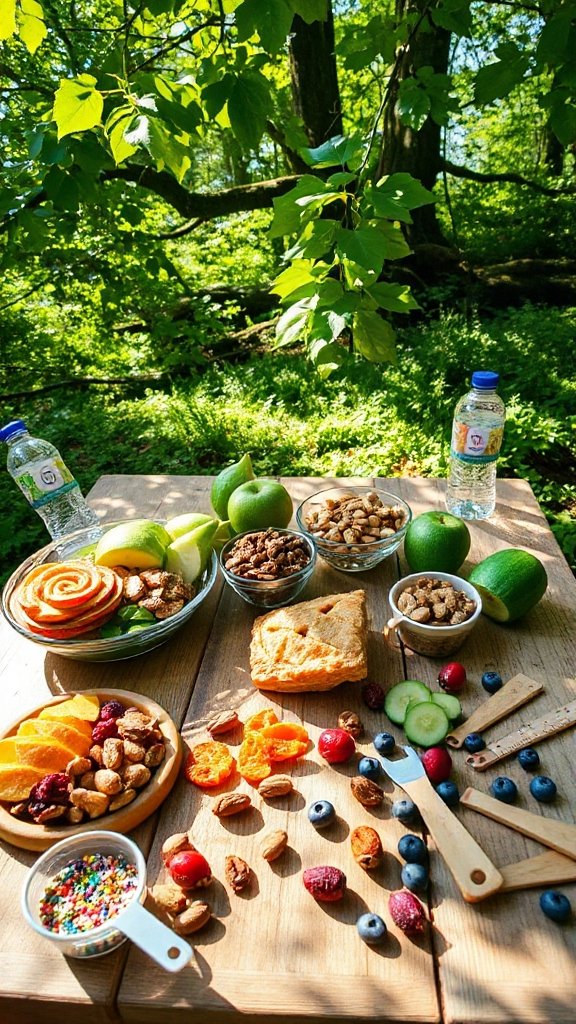
Math in Nature: Scavenger Hunts – A Recipe for Exploration and Discovery
This engaging dish encourages kids to explore the natural world while enhancing their math skills through a scavenger hunt. With a focus on counting, measuring, and identifying objects in nature, kids will enhance their observational skills and apply mathematical concepts to their surroundings, all while having fun outdoors.
| Ingredients | Quantity |
|---|---|
| Nature scavenger hunt checklist | 1 (customized list) |
| Clipboards | 1 per child |
| Pencils or pens | 1 per child |
| Measuring tapes or rulers | 1 (optional) |
| Bags or baskets for collecting items | 1 per child |
| Prizes for completion | Optional |
Cooking Steps:
- Create a nature scavenger hunt checklist that includes items to find that relate to math (e.g., leaves of different shapes, rocks of various sizes).
- Provide each child with a clipboard, pencil, and collection bag or basket for their findings.
- Set guidelines for how far they can explore and establish a time limit for the hunt.
- Encourage children to measure or count items as they find them, integrating math into their discoveries.
- Gather back together to share findings, discuss measurements, and give out prizes for participation and creativity.
Building Math Skills With Board Games
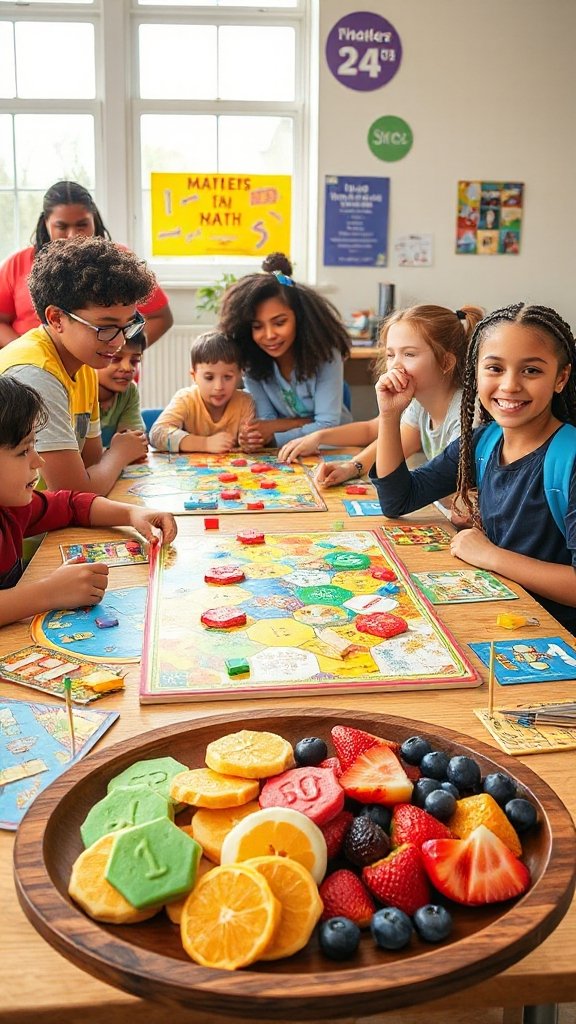
This delightful dish introduces an engaging way for kids to reinforce their math skills through board games. By bringing together the elements of competition, strategy, and camaraderie, children not only learn essential math concepts but also develop critical thinking and social skills. Board games like Monopoly, Uno, or custom math-themed games provide a platform for kids to practice counting, addition, subtraction, and more, all while having an enjoyable time with peers or family.
| Ingredients | Quantity |
|---|---|
| Variety of board games | 3-5 games |
| Game pieces (if not included) | 1 set per game |
| Dice (if applicable) | 1 per game |
| Score pads or paper | 1 sheet per group |
| Pencils or pens | 1 per child |
| Snacks for game time | Optional |
Cooking Steps:
- Select a variety of board games that incorporate math concepts and gather all the necessary game set-ups.
- Explain the rules of each game to the kids and how they relate to math skills.
- Divide the children into groups and assign them different games to play, ensuring they rotate for the opportunity to explore various math concepts.
- Encourage friendly competition by keeping score and allowing discussions about strategies that require mathematical thinking.
- After the games, come back together to share experiences and insights, discussing the math skills applied during the games, while enjoying snacks together.
Collaborative Math Club Activities
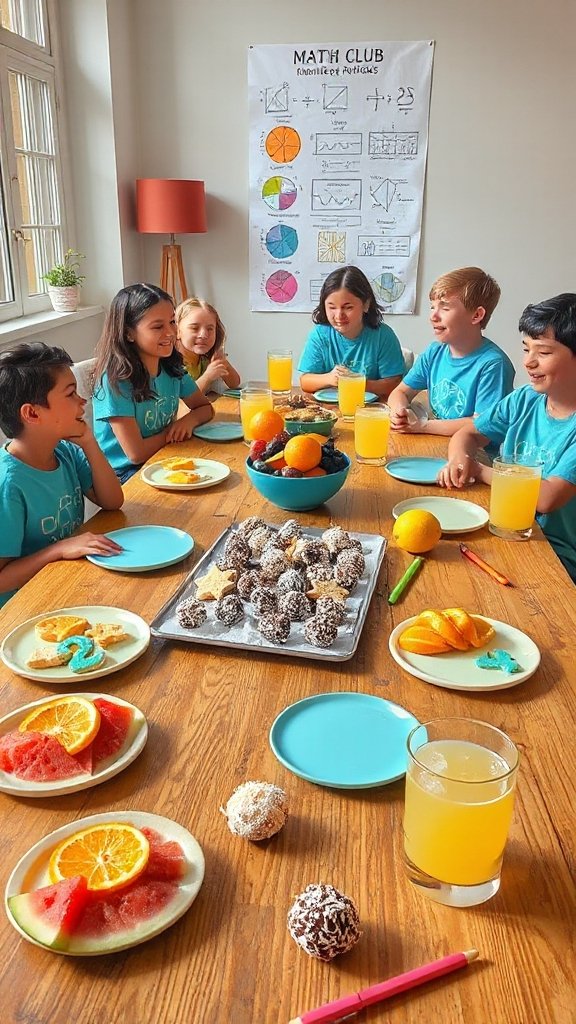
This recipe serves up a fun mix of collaborative math club activities that encourage teamwork and problem-solving among kids. Engaging in group challenges and games not only fosters math skills but also promotes collaboration and communication, making learning an enjoyable experience. Kids will participate in activities that require collective creativity and mathematical reasoning while building friendships.
| Ingredients | Quantity |
|---|---|
| Math puzzles or brain teasers | 5-10 puzzles |
| Large sheet of paper | 1 per group |
| Markers or crayons | 1 set per group |
| Timer | 1 (if applicable) |
| Prizes for winners | Optional |
| Refreshments | Optional |
Cooking Steps:
- Gather a variety of math puzzles or brain teasers that can be tackled in groups.
- Divide kids into small teams and provide them with materials such as paper and markers for jotting down their solutions.
- Explain the rules of each activity, emphasizing teamwork and collaborative problem-solving.
- Set a timer for a specified duration to add excitement and encourage quick thinking.
- After the activities, convene to review answers, discuss strategies used, and celebrate teamwork, optionally rewarding participants with small prizes or refreshments.
